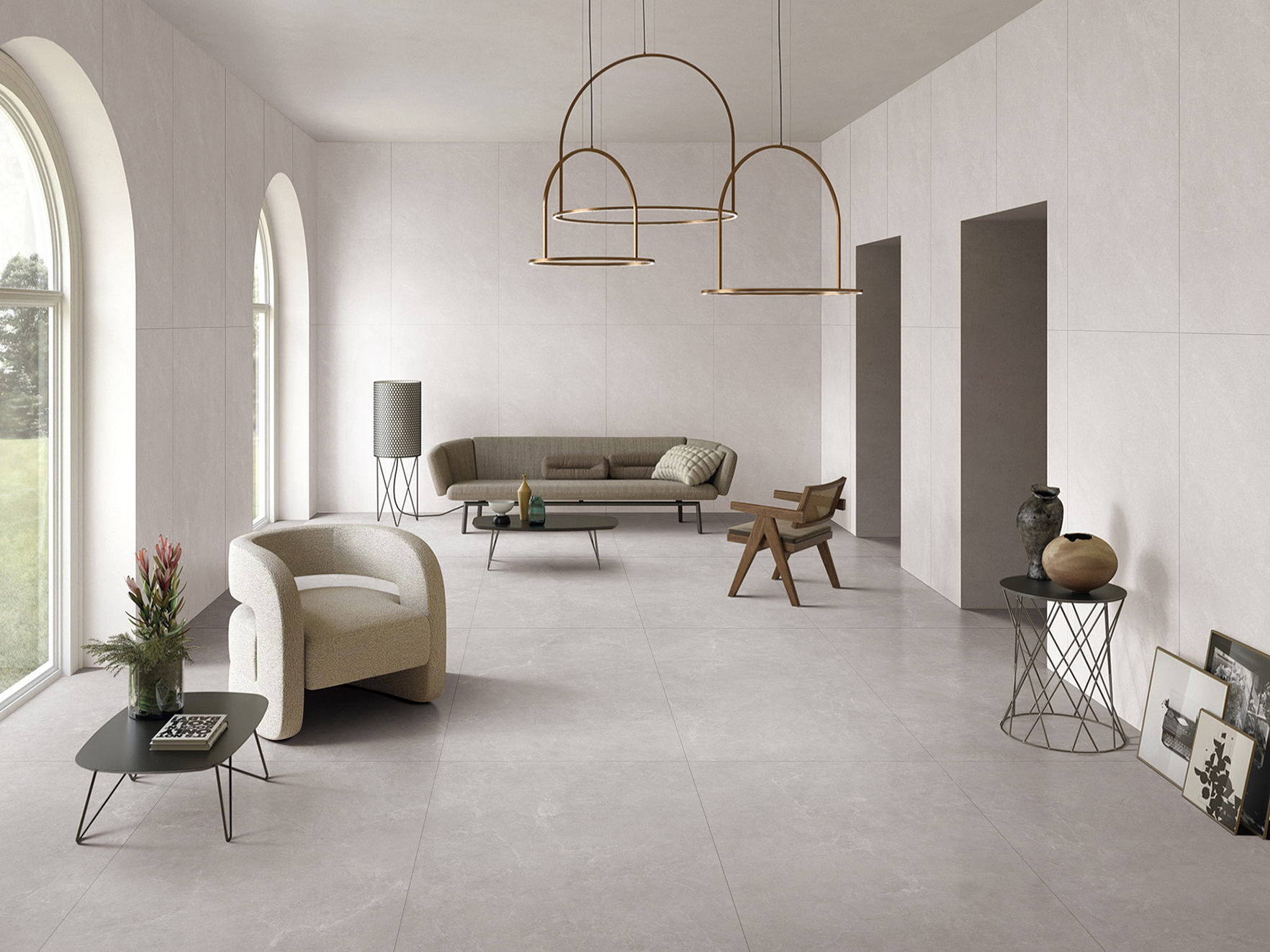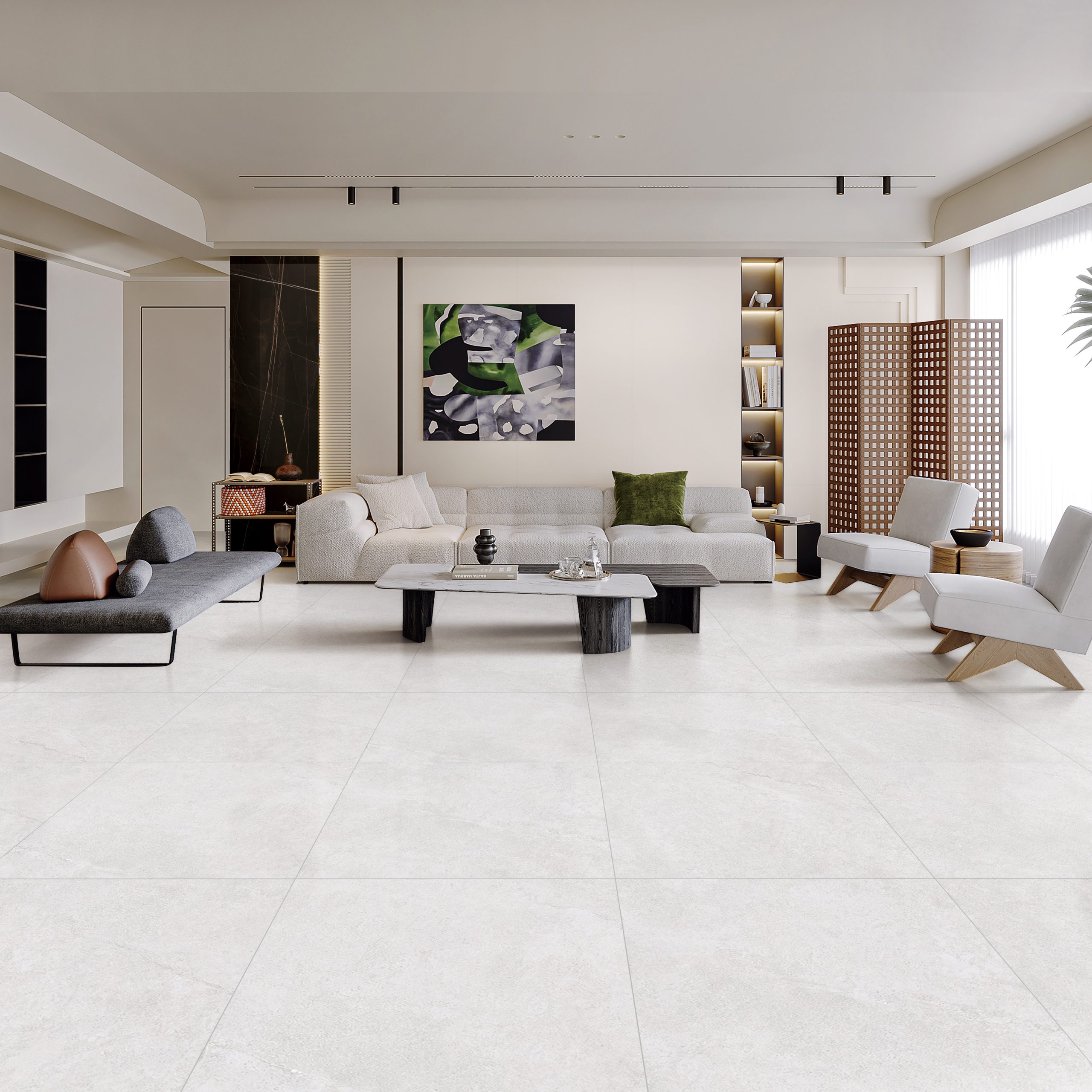
Tile Industry Accelerates Transformation and Upgrading: Innovation-Driven Development and Value Reshaping as Key
In recent years, driven by global market changes and domestic policy guidance, the tile industry has undergone a profound transformation from scale expansion to value reshaping. Green manufacturing, technological innovation, and international market expansion have become core forces driving the industry’s development, propelling it toward high-end, intelligent, and sustainable directions.
1. Technological Breakthroughs and International Standard Leadership
In 2025, China led the development of the first international standard for ceramic tiles, ISO 10545-23, which focuses on methods for determining the elastic modulus of ceramic tiles. This provides critical technical support for the efficient processing and safe application of large-format ceramic slabs. This breakthrough marks China’s transition from “following” to “leading” in international ceramic standard setting, contributing Chinese expertise to global high-quality industry development. Concurrently, the slab industry has shifted from “rapid expansion” to rational development. Leading enterprises have established benchmarks in high-end commercial spaces through process innovation and end-to-end service upgrades. For example, digital inkjet printing and 3D printing are widely adopted, advancing products from “form imitation” to “texture authenticity.” Slab products integrating stone and wood textures have become mainstream in home and commercial spaces due to their versatility and aesthetic value.
2. Product Trends: Rise of Warm Tones and Small-Format Tiles
International tile trends indicate that warm tones will become the core of 2025 trends, with shades like beige and ivory white gaining popularity. Small-format tiles (e.g., 20x20mm, 75x30mm) are making a comeback, enhancing rhythm and narrative in spatial design through color and 3D pattern combinations. Wood-grain and cement-effect tiles also meet consumer demand for the “quiet luxury” trend through color innovation and process upgrades. Furthermore, functional tiles with antibacterial, anti-slip, and self-cleaning properties have significantly increased market penetration. Photocatalytic self-cleaning technology, enhanced via material modification, offers new options for green buildings.
3. Green Manufacturing and Sustainable Development
Driven by “Dual Carbon” goals, the industry is accelerating its transition to green manufacturing. Several enterprises have established carbon-neutral demonstration plants, reducing energy consumption per unit product by over 20% compared to traditional production lines through technologies like photovoltaic power generation and waste heat recovery. Solid waste recycling has become a priority, with some companies achieving a resource utilization rate exceeding 30% through ceramic waste residue recycling technologies. Additionally, policies like GB21252-2023 “Energy Consumption Limit per Unit Product of Architectural Sanitary Ceramics” further strengthen energy consumption control, pushing enterprises toward cleaner production.
4. International Trade Challenges and Market Diversification
The international trade environment has become increasingly complex. In August 2025, the U.S. maintained a 358.81% countervailing duty rate on Chinese tiles, almost blocking direct export routes. Anti-dumping investigations by Vietnam and India have added external market pressure. Facing these challenges, Chinese companies are breaking through via technological upgrades and market diversification strategies. High-value-added products like slabs and electronic ceramics have achieved export growth of 35%. Leveraging the “Belt and Road” initiative and RCEP policy benefits, emerging markets in Southeast Asia and the Middle East have become new export growth points, with some enterprises increasing production capacity by 30% through overseas localized production.
5. Industry Exhibitions and Industrial Chain Collaboration
Industry exhibitions have become vital platforms for leading transformation. The 2025 Jiangbei Tile Expo, themed “New Beginning,” focused on intelligentization, greening, and design innovation, injecting renewal momentum into the northern ceramic industry through a “government-enterprise collaboration” model. Meanwhile, the Foshan Tile Fair reflected a shift from “chasing trends” to “cultivating value,” with quality grading standards (e.g., the 5A standard) replacing style imitation as a new benchmark for brand competition. Collection store models and new media marketing further reconstructed industrial chain collaboration, driving brands from “product delivery” to “value delivery”.
Future Outlook
Moving forward, the tile industry will continue to focus on deep technology integration and global layout. Ceramic 3D printing, AI quality inspection, and zero-carbon combustion technologies will gradually industrialize. The ceramic 3D printing market is projected to reach $2.5 billion by 2034, with a CAGR exceeding 31%. In the transition from a “manufacturing giant” to a “quality manufacturing powerhouse,” China’s tile industry is poised to reshape the global competitive landscape through innovation-driven development and collaborative growth.



